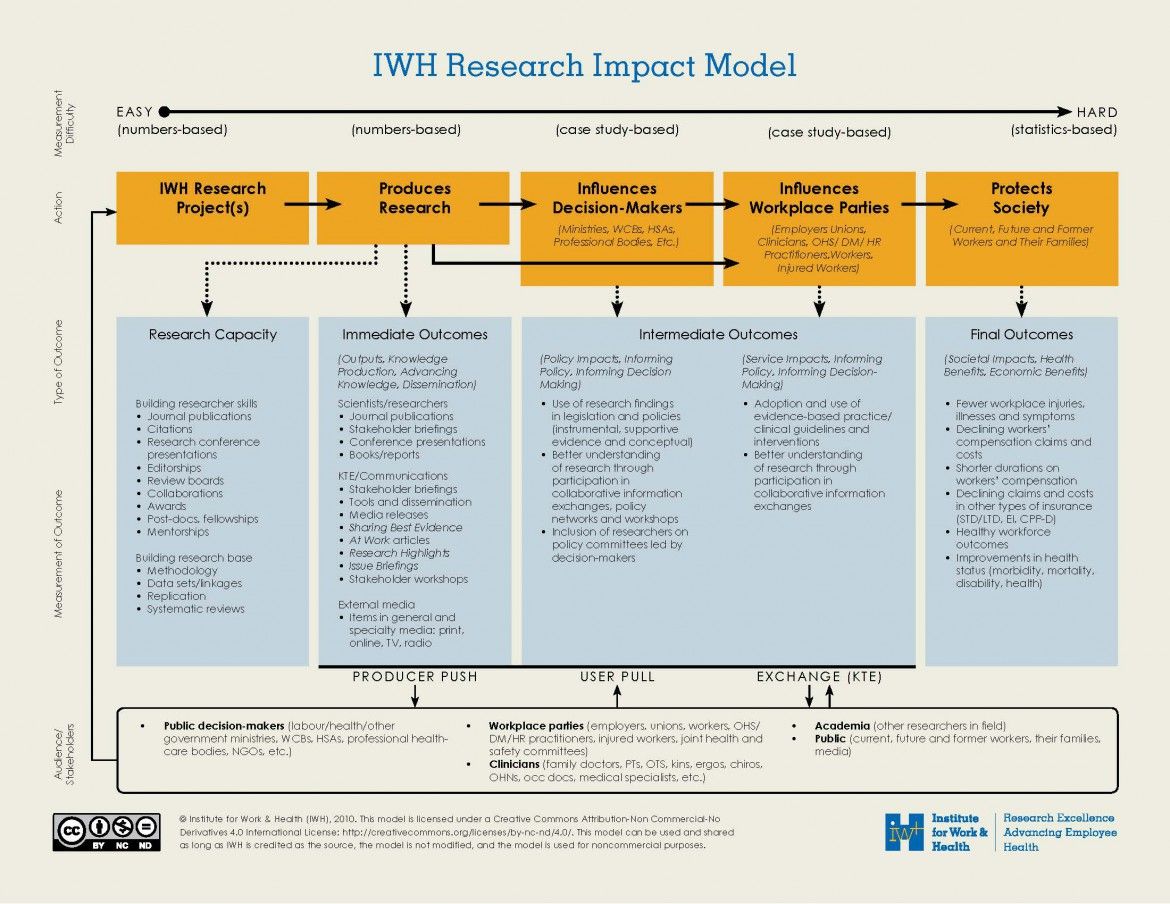In order to gauge the impact of our research, the Institute for Work & Health tracks and reports on the uptake and use of our research by stakeholders within the health and safety system.
How we measure impact
The measurement of our impact is guided by the IWH Research Impact Model, shown below. This model recognizes that the immediate outcomes of research, such as journal articles, research summaries and media mentions, are fairly easy to track. However, the intermediate and longer-term outcomes of research—that is, policy and practice changes that eventually result in improved outcomes—are difficult to track.
This model was developed in 2010 by Cindy Moser, a member of the Institute's communications team. For a detailed explanation of the model, see the article "A research impact model for work and health" by Institute knowledge transfer and exchange and communications experts, which was published online in November 2020 by the American Journal of Industrial Medicine, https://doi.org/10.1002/ajim.23201.

Our research impact case studies
One way we gauge impact is through case studies, which tell the story of how research informed the activities of particular stakeholders. We assign a “type” to our case studies, based upon the model’s framework.
Type 1 case studies: Evidence of the diffusion of research
The degree to which IWH research is noticed and referred to by external stakeholders in the occupational health and safety system―e.g. policy-makers, health and safety associations, employer groups, unions, clinicians and workplaces―in their own deliberations and information vehicles.
Type 2 case studies: Evidence of research informing decision-making
The degree to which IWH research is acted upon by external stakeholders in developing and changing legislation, policies, directives and programs that have an impact (often through intermediaries) on workplaces, as well as the degree to which evidence-based practices suggested by IWH research are taken up directly by workplaces or clinicians.
Type 3 case studies: Evidence of societal impact
The degree to which IWH research contributes to improvements at the societal level, including changes in: work injury/illness rates; workers’ compensation and other insurance claims, durations and costs; healthy workforce outcomes; and population health status.
The last level of impact, Type 3, is hard to measure because of issues surrounding attribution (the degree to which a societal impact can be clearly attributed to research) and time lag (the length of time it takes for research findings to get published, noticed, acted upon and have an effect).
Latest case studies

Word spreads about IWH tools, thanks to stakeholders' support

Being part of an IWH research partnership helped health charities meet their communities’ needs

Saskatchewan’s construction safety group uses IWH tool to improve safety culture

Moving research into practice in a program about movement
